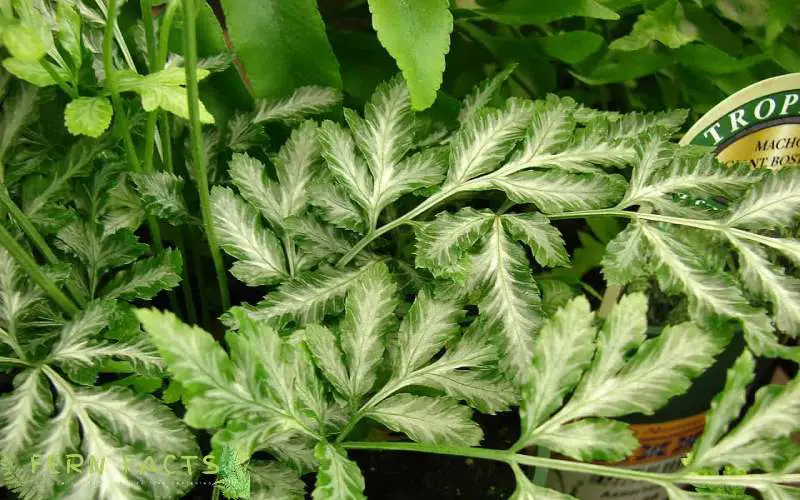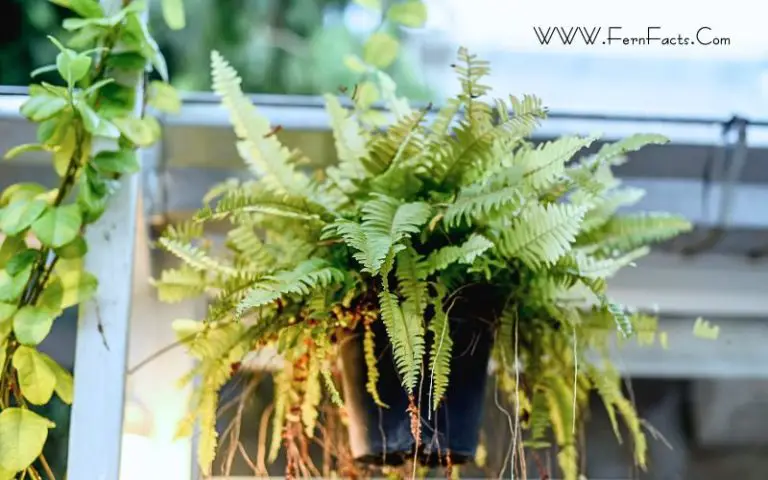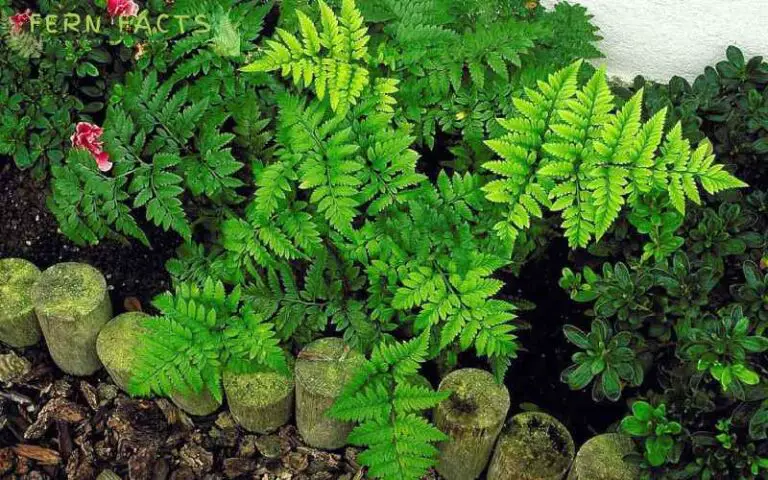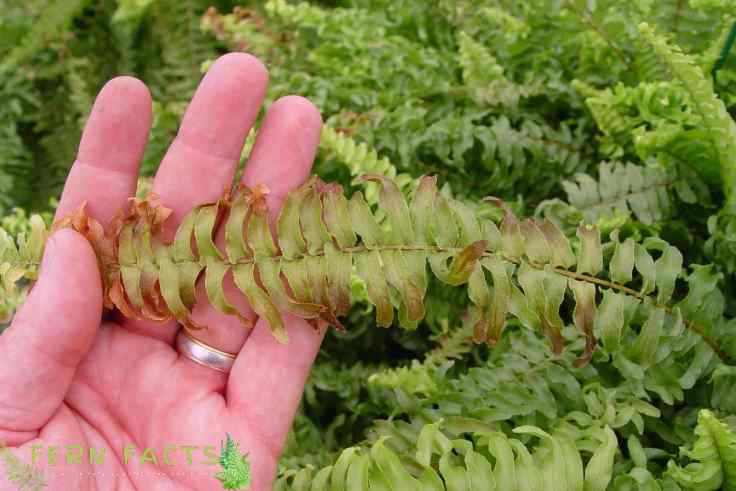How to Grow and Care for Silver Lace Fern (Pteris Brake Fern)
Silver lace ferns are one of the beautiful and elegant ferns which are used in terrariums and vivariums to enhance the wildlife atmosphere.
If you are wondering how to grow and take care of these silver lace ferns in the house, then don’t be freaked out.
In this article, I’ll describe all about these silver lace ferns comprehensively along with their care and maintenance tips.
Additionally, I’ll provide you with some guidelines so that you can easily propagate these ferns and troubleshoot all the problems of these silver lace ferns while giving them natural wildlife in your house.
Overview of Silver Lace Ferns

- Botanical name: Pteris Brake Fern
- Common name: Sword Brake Fern, Slender Brake Fern, Variegated Brake Fern
- Family: Pteridaceae
- Plants: semi-evergreen
- Native range: Asia, South America, California, pacific
- Native habitats: Subtropical
- Shade requirements: partial to full shade
- Height: around 12 inches
- Soil: acidic, well-draining
- Special features: control soil pollution
- Hardiness zone: 9,10, 11
More than 300 subspecies belong to this Pteridaceae family. You can spot these pteris or silver lace ferns in tropical and subtropical areas like New Zealand, Australia, South Asia, Africa, Japan, and China.
These ferns increase the range of bright, wild colours in the garden.
All About Silver Lace Ferns
Silver lace ferns have silvery white foliage in their initial stage of life, which then turns into vibrant green foliage at the edges of fronds during the mature period.
Because of their small size, these ferns are one of the best choices to plant them as indoor decor. These silver lace ferns are usually native to Asia, South Africa, North America, china, japan, California and many more countries in their tropical and subtropical areas.
Like their natural habitat, these ferns prefer partial to full shade and full-dappled sunlight. Andnos prefer medium moist soil along with a good drainage system.
Their ideal temperature would be between 65 to 80 degrees Fahrenheit. Additionally, they will require at least 70 to 80% humidity in the atmosphere.
Silver Lace Ferns Care and Maintenance
To make them thrive in your garden, you need to give them their ideal atmosphere. By giving them their light, soil, water, fertilizer, and grooming session you can make your ferns nourish in nature.
Light
Just like most of the ferns, these silver lace ferns prefer partial to full shade under indirect sunlight. Filtered sunlight or dappled rays of the sun can optimise their growth.
Try to give them a minimum of 5 to 6 hrs of bright indirect sunlight daily. Hence, you can place them near a window or any north or west-facing window where they can get indirect rays of the sun.
They require more brightness compared to other ferns. Therefore, you must give them at least 75% filtered sunlight throughout the day.
Here you can give them mild morning sun rays which will be effectfull for their growth. Try to avoid the harsh midday rays of the sun because direct sunlight can burn out their fronds, which will be harmful to their growth.
Try to avoid placing them in too dark places, which will impact their growth. Thus, try to locate them in an indirect, bright place so that they can thrive. Alternatively, you can give them artificial lighting as well.
Water
These silver lace ferns prefer moist soil to thrive and bloom. Conversely, they can not tolerate excessive dryness or the dry soil.
As they are tropical and subtropical native ferns, they are surrounded by damp, wet, rainfall forests and environments. Thus, you need to give the exact same atmosphere for their active growth.
That’s why you must always keep their soil moist and damp. Water them when you observe the upper portion of the soil become dry.
Note that they prefer moisture and dampness in their soil but do not overwater them. They can’t tolerate heavy or standing water.
Fertilizer
These ferns don’t need much fertilizer. However, you can still feed them to increase their growth. As they are the slow growth ferns, fertilizer will boost their growth.
You can use moderate fertilizer with all-purpose essentials and feed them during their growing seasons. Silver lace ferns usually grow between March and September.
Therefore, in such seasons, you can feed them after a forty-day period. Do not over-fertilize my ferns because it can lead your ferns to lose their green foliage or can make their fronds brown.
Temperature and Humidity
These silver lace ferns are tropical ferns, that’s why their ideal temperature would be between 65 to 80 degrees Fahrenheit.
Keep the temperature above 55 degrees Fahrenheit because they can’t tolerate anything less than that.
Additionally, these events are fond of the atmosphere’s 70 to 80% humidity. If these ferns don’t get their minimum required humidity from the atmosphere, then their fronds may curl up or become brown as well.
Therefore, giving them their ideal humid condition is one of the crucial segments of their growing parts. Because they might adjust to the imbalanced temperature, where their growth will be slow. But they cannot survive low, humid conditions.
Pruning
These silver lace ferns grow tall if they aren’t groomed properly. Try to cut off their towering streams, which will also increase the frond’s quantity in the plants.
Additionally, you have to remove all the diseased and dead fronds to nourish their looks.
Overwinter Care
If you live in an extremely cold country where there is a possibility of plants freezing, then you need to locate them inside your house. Additionally, you can wrap them up with burlap to keep them warm.

How to Do Potting of Silver Lace Ferns
Silver Lace ferns are known for growing in terrariums and vivariums. Therefore, you can plant these ferns inside of these terrariums.
To plant them in a terrarium, try to choose a place where they can get enough space to grow and spread rather than be congested by other plants.
If you provide them with a sufficient drainage system they can survive and thrive. You can also plant these ferns in hanging baskets or any other containers.
To plant them in a hanging or any normal pot, dislocate them from their previous pot. Then, mix the soil with organic matter. Later, plant them inside the new containers and water them properly.
How to Do Propagate of Silver Lace Fern
Generally, these silver lace ferns propagate through the division method. If you tend to propagate these silver lace ferns you need to choose their growing sedans, which are in the early summer and spring seasons.
Those seasons are the best time to propagate this fern as the temperature is neither too hot nor too cold, and they grow very rapidly.
For propagation, choose the plants and divide the plants from their rhizomes while separating both sessions equally.
Later on, make the soil with organic matter and replant the plant inside of the container. Water them after their first propagation and keep the soil moist and damp.
You will notice that within a few weeks, your plants will have new fronds, which means you have successfully done the propagation process.
Pests and Common Problems of Silver Lace Ferns
Let’s go through some pests and other common problems of these ferns so that you can troubleshoot all the issues beforehand.
Pests Problems
These silver lace ferns are a very frequent meal for mealybugs because of their unique fronds. If you see any mealybugs near your plants, immediately you need to take action.
Otherwise, the situation will get worse. You can use infestations or dish soap solution sprays to their fronds. Try to spray the solution a couple of times a week in order to fully get rid of the mealybug pests.
Common Problems
One of the most common issues of these silver lace ferns is that they can easily get roots bound. If you observe any yellow leaves or rapid growth where their roots are unable to fit in the pot.
That means you need to report your silver lace ferns to bigger-sized containers where they’ll get enough accommodation to breathe. You can follow the guidelines in the article to do your silver lace fern’s repotting.
- Find Out More About Caring for and Cultivating Bolbitis Water Fern.
Conclusion
Summing up, silver lace ferns are very attractive ferns used for terrariums and vivarium decor purposes. Their unique foliage and shapes are one of the main features of their attraction.
To grow and plant these silver lace ferns at your house, you need to give them their ideal condition, such as light, soil, fertilizer, and water.
Additionally, you can also troubleshoot all the problems with these ferns and can provide healthy wildlife in your home garden.







